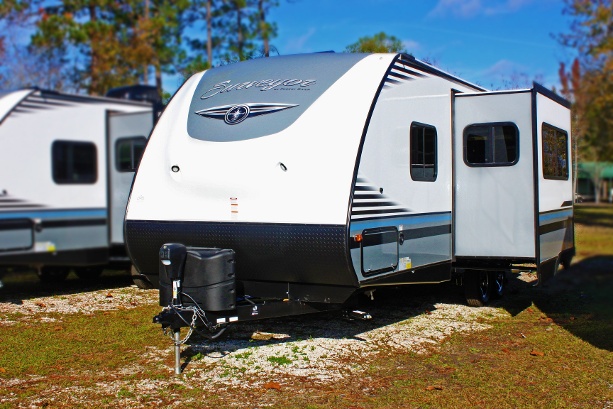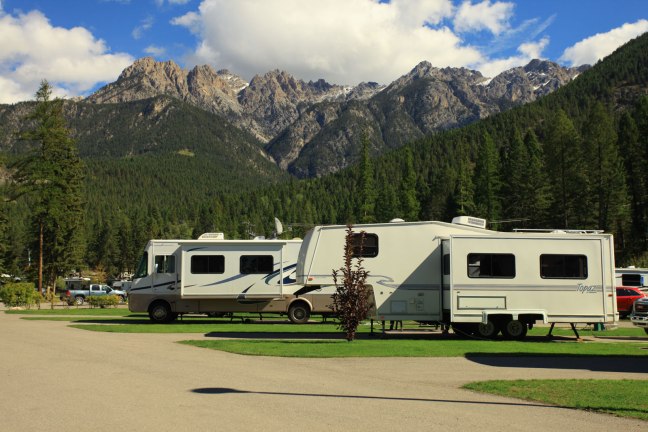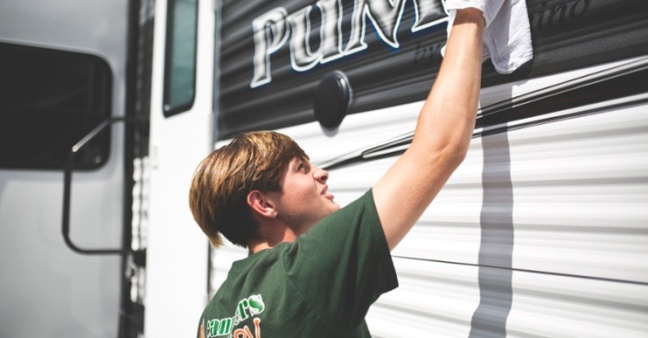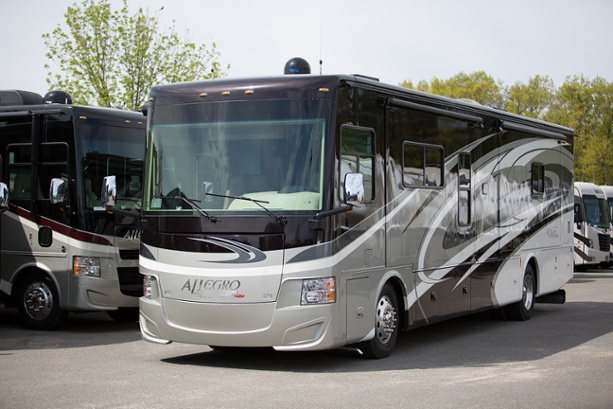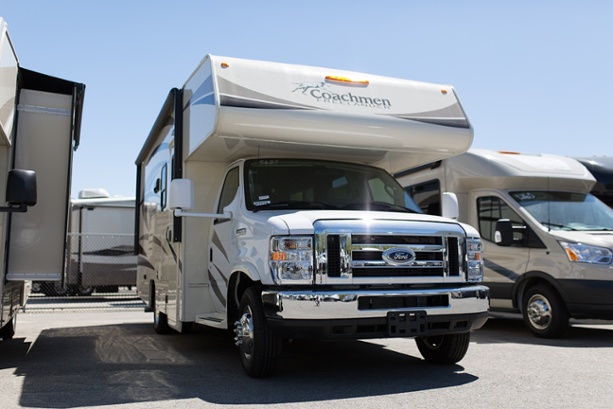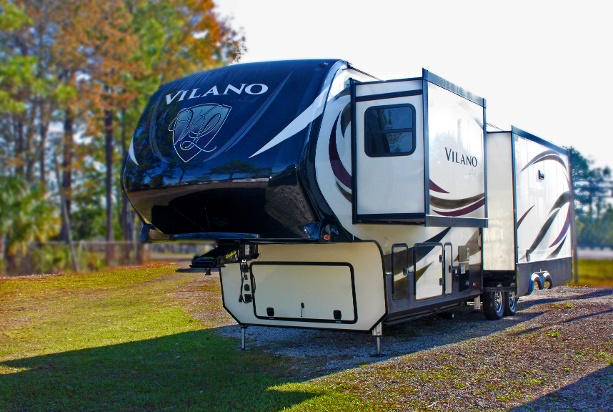
Great for:
- Long distance road-trippers
- Campground socialites
- Larger families
- Families with older children
Fifth Wheel Pros:
- Superior sway control for longer trips
- Spacious interiors with ample headroom
- Split-level floorplan for extra privacy
- Many luxurious amenities available
Fifth Wheel Cons:
- Requires a pickup with special hitch to tow
- Can be more expensive than comparable travel trailers
- May be too big for some campsites
Fifth wheels are split-level RVs that must be towed by a pickup truck with a special hitch. Typically, a fifth wheel will have a living space/bunk area on the lower level and a private master bedroom that hangs over the truck bed (rear-bedroom options are also available).
Fifth wheels are great for larger families and for those who are interested in maintaining some privacy while camping. The roomy interiors are also perfect for hosting get-togethers with friends and family. They also offer a smoother driving experience with less sway, so they work well for longer trips.
Prices range from $15,000 to $120,000+.

